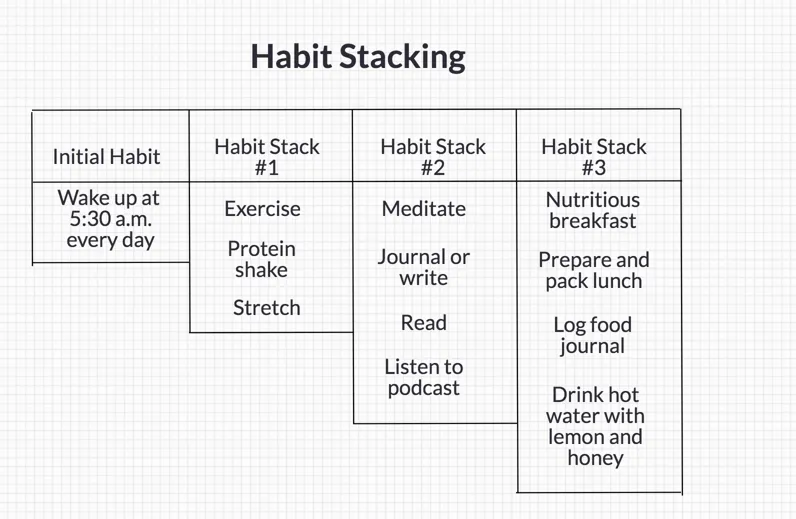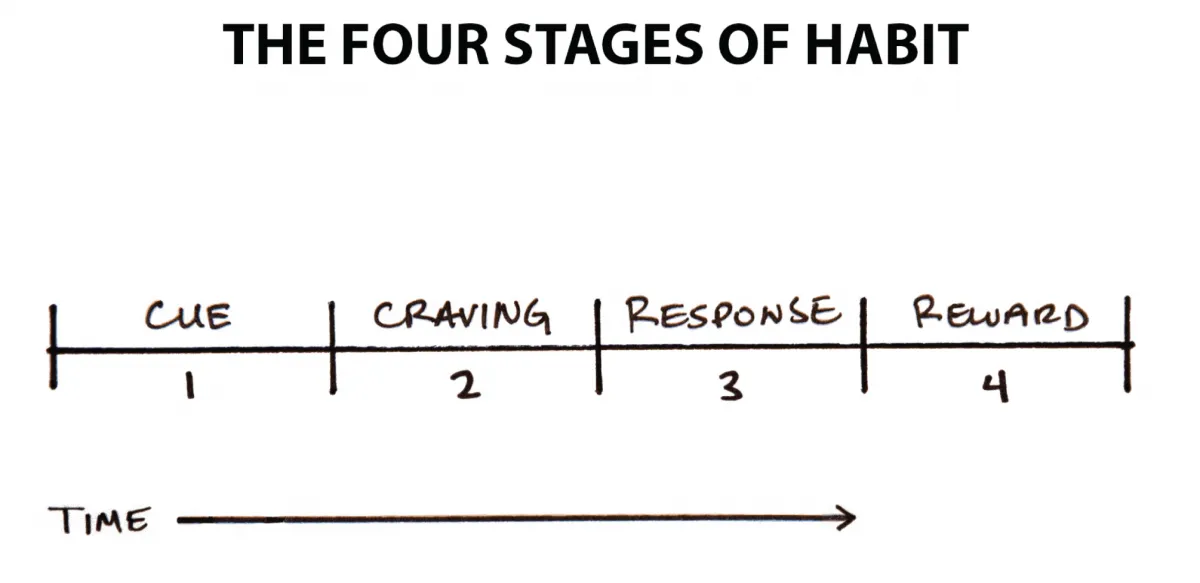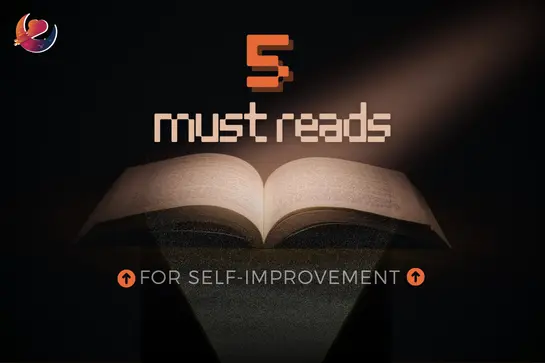By Prathamesh Kapse | 21st April, 2023
Unlock a superpower and build new habits easily with Habit Stacking. Learn how to use this technique to make building habits easier and more efficient!
How we struggle with building new habits for ourselves, for our own betterment is not a new topic to discuss. We have been facing such issues for a long time now. There have always been solutions, effective ones, to issues like these but only a minority of people seem to be using them. Whenever you look at your friends, relatives, teachers, or just random people you meet, you often hear that they want to build a new habit for themselves, but oftentimes, they fail. Now, if that’s the case, if people with immense self-control and self-discipline fail at building habits, people like us, with self-control so poor that a single notification distracts us from the task at hand, shouldn’t we stay away from the struggles of habit-building?
How about NO?
Building habits can be an extremely easy or extremely difficult task to achieve based on the approach that we have. Suppose I am trying to stay away from my phone for as long as possible. That is a habit I am trying to build and I’m sure most of the people of my generation are. Now, if I have my phone by my side 24/7, building that habit is going to be as difficult as climbing Mount Everest (metaphorically speaking because I have no experience of climbing Mount Everest. Respect to those who do). That is a bad approach to building/quitting the habit. The one that is bound to result in failure.
So, what’s the good approach? you may ask
There is no single good approach but an array of good approaches. Some work wonders without even realizing it, while others require little to no effort. There are some which require a lot of effort but then, shouldn’t they be in the almost-bad category?
Building habits should be easy. In fact, a little too easy. If you are surprised by what I said in the last sentence, welcome to the club. I was surprised too until I actually started using these methods for myself. Now, what I say is considering almost ideal conditions. Every human being is different. Unique in their own ways. So, you should not expect the same things to happen to you that happened to me. Once you start expecting these techniques to work the same every day, and disappoint yourself when they don’t, you’ll make things hard for yourself. So, take it easy. Your first primary goal is to do, to take action, and your second primary goal is to stay consistent. Your result is the secondary goal. Once you start thinking about the result, you lose focus on the process. And believe it or not, the process is the most important part of all. Consistency is key, and I’m sure you’ve read that a thousand times if you’ve come this far. Only reading about self-development is not going to help unless you start implementing what you read. So, moving on to the good approaches.
There are thousands, rather millions of good approaches to building/quitting habits (Hyperbole intended). I would say the more appropriate word would be the right approach. Making the object of habit difficult/easy to access, making the process more difficult/easier to do, and habit stacking are a few. We’ll discuss the first methods in a later article.
What Is Habit Stacking? How Does It Work?

Habit stacking is a very simple method. All you have to do is perform a habit that you already have developed and then perform the new habit. For example, if I have a habit of making tea/breakfast every morning, then I will make tea/breakfast every morning because it’s a habit. It’s almost inevitable. So the idea is if I want to meditate daily and make that a habit, I will stack it on top or on the bottom of the original habit. Basically, I’ll decide that I will not make tea/breakfast unless I meditate for at least 5 minutes, or, I will meditate for 5 minutes after I make tea/breakfast. Personally, I go for the first approach. If I were to build a meditation habit, I would stack it before my current habit. That way, I don’t find a way out of the new habit by bringing up reasons. Your brain is selfish. Once it gets done with the things it’s comfortable with on a habitual basis, it goes hunting for new surges of a chemical that makes it feel good i.e. Dopamine. So, there is a high chance that after you’re done with the current habit, you’ll just wander into the unknowns and forget about the new habit. Doing it before restricts your brain from following its normal routine and forces you to finish the new habit first. Obviously, a bit of self-discipline is required here. But I can assure you its requirement is much lesser than if you were to meditate randomly in the morning for 5 minutes a day. Once you make yourself familiar with the process, you will keep going. That’s why being in the process matters more than being focused on the rewards. If I am meditating to be happier and more joyful in my daily life, and meditating for 5 days doesn’t bring me my happiness, I will easily break the streak and stop meditating. It’s normal human behavior. If you struggled with issues like this in the past, I can confirm you are human. Believe in the process, and you will get the rewards.
You should be far more concerned with your current trajectory than your current results.
—James Clear
The Science Behind Habit Stacking.

(The knowledge I share in this section is gained from reading Atomic Habits by James Clear. I have added hints of my experience to make it better for you readers. For more insight into building habits, I would recommend reading Atomic Habits.)

There are a hundred billion neurons in your brain, and some million more in your body. They make the nervous system. Each time you do something, your brain fires electricity through these neurons which travel through the nervous system and reach the required body part. The speed of this process is extremely fast. The neurons are basically a circuit. Except, they have a memory. The neurons can remember. Pretty obvious, the brain can remember and so the neurons can too. Every time you do something that makes you feel good, the brain records it. Whenever you have a surge of dopamine in your body, your brain records it. It knows that doing this helps me feel good. Dopamine is a feel-good chemical. The next time you see the thing, the brain craves it. It wants to do the thing again. This is the Craving stage of a habit. Seeing the thing and getting the craving is known as the Cue stage. When you work on the craving and perform some action, that stage is known as the Response stage and when the task is finished, the reward is earned. You guessed it, this stage is known as the Reward stage. Let’s call this process The Habit Routine.
What I’m trying to tell you here is, your habits are made up of 4 stages. Cue, Craving, Response, and Reward. In Habit Stacking, we pair the Reward stage of the first habit with the Cue stage of the next habit. Let’s put it in examples. I wake up and I get a cue of brushing my teeth. Now, if you’re a normal human like me, you will also want to brush your teeth when you wake up. That’s my cue, waking up. The craving for this particular habit is not much because you’ve been brushing your teeth for ages. So, as a human being, you’ve lost interest. You do it because it’s hard-wired into your neurons. So, the response stage is actually brushing your teeth. The reward is fresh breath. Now, I feel fresh. That’s my reward. If I make this my cue, I can start another Habit Routine. So, I decided that when I brush my teeth, I will read the newspaper or just have a glance at the headlines. Or maybe, I will go for a run, or I will take a cold shower, or I will go to the gym, or I will meditate, whatever habit you want to build. That’s my cue now. Bear in mind it will take some time for the craving to build. The more you perform the habit, the more craving you will have the next time around unless you get used to it. So, don’t expect a craving the first time you perform the habit if you don’t completely want to do it. After the cue, work on the response. You’ll get the reward. As easy as it is to read, it is to perform. Stack habits like these and you’ll be good to go.

The more you perform the stacked habit, the more it’ll hard-wire into your neurons and the easier it will be to perform the next time around. Stack Habits and get the work done. Make this your motto 💪🏼
The Don’ts Of Habit Stacking.
An important thing to remember while stacking your habits is that make sure the original habit is performed consistently. If you stack habits around a habit that is performed only when you have school, college, or classes, or only on weekends or weekdays, you shouldn’t expect the habit stack to work. Because, when you have to build a habit daily, you need to perform it daily and I don’t think that is something to mention notably. If you’re here reading this article, you’re smart enough to figure it out for yourself. I’m not specifically talking about the things that you have to perform only on certain days or at certain times because I reckon they are easier to perform. You can still use habit stacking to build occasional habits around existing habits with the same frequency.
I know this method is addictive. So we keep stacking habits. There was a time when I stacked 4 habits. It was my first time using this method. I decided I will wake up → Brush my teeth → Go for a run → Cold shower → Meditate. This was my stack for literally only 4 days. It only lasted 4 days. Why? Because not all the stacks were based on already-built habits. Brushing my teeth was a habit, but running was not. So if running was not a habit, I would have to force myself into a cold shower. It proved quite difficult for me. Because I just forced myself to go for a run. After coming home from a difficult run, I am now forcing a difficult cold shower. All the difficult things stacked on top of one another. Now, it was even more difficult because it was my first time using this method. Once you get familiar with it, try other things. Try experimenting. Just not right away. Make sure you start off easy and build on it.
If we were taught to speak complete sentences from the day we were born, humans would’ve been a million years behind where they are now. Who knows? Maybe we would never be able to speak a single word.
My message is, to start off slowly, then build. Good Luck!
Thumbnail Design by Mudit Jha






Forgot password?
Close message
Subscribe to this blog post's comments through...
Subscribe via email
SubscribeComments
Post a new comment
Comment as a Guest, or login:
Connected as (Logout)
Not displayed publicly.
Comments by IntenseDebate
Reply as a Guest, or login:
Connected as (Logout)
Not displayed publicly.